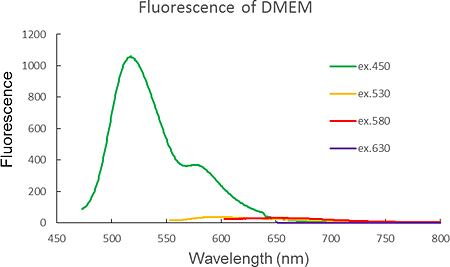The answer is no.
Most of our products are activatable probes that irreversibly fluoresces upon reaction with the target, except for some reversible products such as AcidiFluor series or QuicGSH. Therefore, fluorescence intensity reflects the sum (integral) of the target concentration, from the time point of loading the reagent to the time point of the detection. The slope (differential) of the fluorescence intensity change reflects the target concentration.
The reasons for the reversibility are (1) short lifetime of the targets such as reactive oxygen species or nitric oxide, and (2) low concentration of the targets such as Fe2+. It is not easy to design reversible fluorescent probes for these targets with practical sensitivity.



 Contact Us
Contact Us
